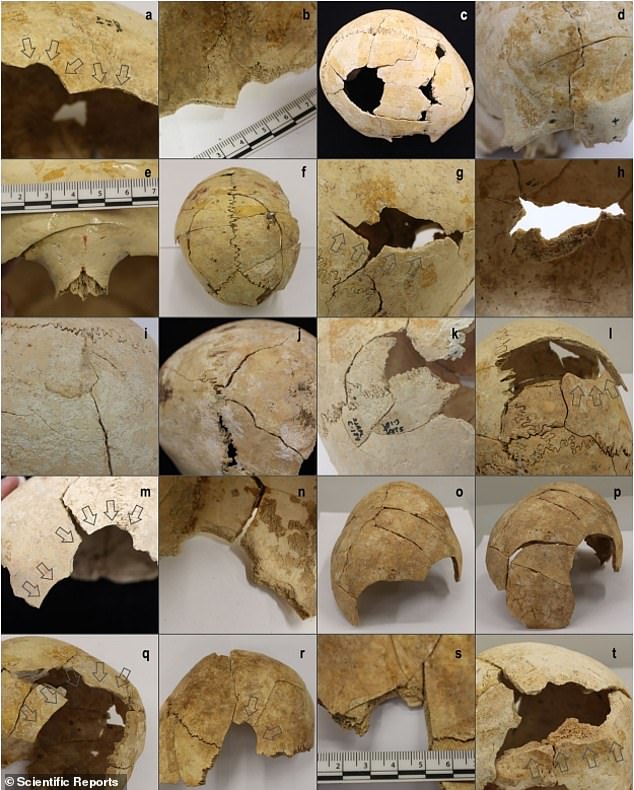Humans engaged in a large-scale WAR in Europe 5,000 years ago – 1,000 years earlier than thought, study claims
>
- Skeletal remains indicate that dozens of people were victims of the war in Spain
- It provides the first evidence of large-scale battles for more than 1,000 years
Humans were engaged in large-scale warfare in Europe 5,000 years ago – much earlier than previously thought – according to a new study.
Analysis of more than 300 sets of skeletal remains suggests that dozens of individuals may have been victims of the early period of the war in Europe.
The study pushes the first evidence of large-scale battles back more than 1,000 years, and suggests that periods of conflict lasted for several months in a row.
The warriors used bows and arrows, axes and blades during their bloody conflicts, with many being found with head injuries.
Previous research has indicated that conflicts during this period, known as the Late Neolithic, consisted of short raids that lasted no more than a few days and involved small groups of 20 to 30 individuals.
Analysis of more than 300 sets of skeletal remains suggests that dozens of individuals may have been casualties in the early period of the war in Europe.
The assumption has therefore been that early societies lacked the logistical capabilities necessary to support longer and broader conflicts.
To investigate this, a team including scientists from the University of Oxford examined the remains of 338 individuals from a single mass burial site in northern Spain dating back 5,000 years.
They discovered that about a quarter of the individuals had skeletal injuries, and 107 head injuries were identified.
Most head injuries can be attributed to blunt force trauma, which may be caused by axes, wooden clubs, slingshots, or stones.
The researchers also found that the majority of infections occurred in adolescents or adult males, a much higher rate than in females.
The findings indicate that many individuals at the burial site were exposed to violence and may have been victims of conflict.
The relatively high rate of healed injuries also indicates that the conflict continued over several months.
About 50 flint arrowheads were discovered at the same site, in addition to 64 blades and two polished stone axes.
“The individuals killed and buried at (the site) were likely primarily defenders in a scenario in which their settlement was attacked or their lands or resources were raided,” the team wrote in the journal Scientific Reports.

Most head injuries can be attributed to blunt force trauma, which may be caused by axes, wooden clubs, slingshots, or thrown stones.
“The evidence that many of the individuals killed were buried at (the site) indicates, first, that the site of the confrontations was not far from the site and, second, that this defense was essentially successful or at least that there were sufficient military personnel.” The community is alive to bury them.
The authors speculate that there may have been tension between different cultural groups in the region during the late Neolithic period, leading to conflict.
Researcher Teresa Fernandez Crespo explained what life was like 5,000 years ago.
“The Neolithic population of the Rioja Alavesa region, where (the site) is located, were large groups formed with up to a few hundred people,” she said.
Their livelihood depended on growing grains, especially wheat and barley, and raising livestock including sheep, goats, cows, and pigs.
Hunting and gathering may also have played a role, as suggested by the accidental discovery of red deer and boar bones and some acorn shells.
“It was interesting to see how reviewing the ancient skeletal collection deposited in the museum for decades led us to challenge basic assumptions of Neolithic warfare.”
(Tags for translation) Daily Mail

